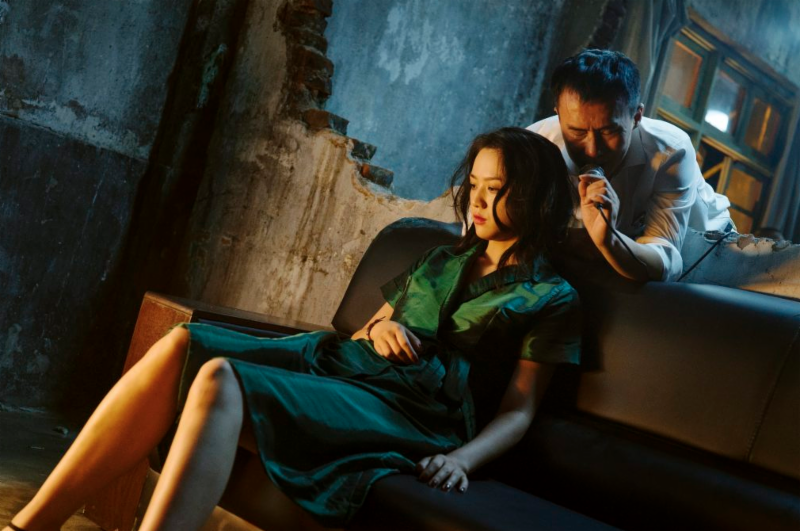Hongwu Luo is a man haunted by loss.
The plot of “Long Day’s Journey Into Night,” which only shares a title with American playwright Eugene O’Neill’s masterwork, is threadbare: a man, Luo, searches for a lost woman of his past from his hometown of Kaili. In the process, he reflects on the death of his father, contemplates the death of a childhood friend named Wildcat and meets and becomes intertwined with a mysterious woman named Kaizhen — is she the one he is searching for?
As if in reaction to this loss, the film is characterized by slow pans and long shots. This is not a quick film: it makes room for each scene, each character, each table cloth and each clinking of the glass. In one flashback scene, Luo eats an entire apple, with tears in his eyes, the camera never moving.
The characters themselves wander through this empty space, continually pushed farther back in the shot or off to the side or else some fragment of their body is highlighted. Combined with this are endless reflections in buildings, puddles and mirrors; together with the amorphous plot, what is created is an uncanny atmosphere full of shifting surfaces on unstable ground.
RELATED: “Booksmart” and “Pokémon Detective Pikachu” take the screen
At the root of this illusory world is the exurban decay of Kaili. In one particularly illuminating moment, Luo is peeping through the breasts of a cardboard cutout of a woman into the woods (a scene which, like so many others, is unexplained), turns and is suddenly in front of a mural that likely dates back to the Cultural Revolution: smiling young Chinese people in uniform, working hard and in unison. On one hand, present day, capitalist China juxtaposed by the Communist past. The spectre of the past is alive, ever-present, disorienting the ground upon which we stand.
Immediately succeeding this is the 90-minute-long tracking shot for which the film is famous. How did Luo arrive at this point? He fell asleep in a movie theater, woke up and followed a passageway into a cave (which may be the best description for the feeling of watching this movie.)
At this point in the film, Luo is immersed in the “night,” an altered reality, and his journey to find a woman from his past is momentarily superseded by the experience of the dreamworld. It is hard not to read this, as noted in the Roger Ebert review by Simon Abrams, as an analogy for how we use cinema to make sense of the world around us, and as art in general as a (potentially) liberating force.
RELATED: Live entertainment around campus
Why does a 2019 Chinese film take it’s name from a mid-century American play despite sharing no structural similarities? This is a surface-level equivalency perhaps, but all the more important, the way worlds seem to overlap with one another with such ease not only within the movie but in our lives.
In a world that is ever-shifting by forces beyond our control and permeated by a deep sense of loss — de-urbanization, de-industrialization and melting polar ice caps, to name only a few — “Long Day’s Journey Into Night” should be regarded as “foreign” to an American audience at our own peril.
Follow Claude on Twitter









